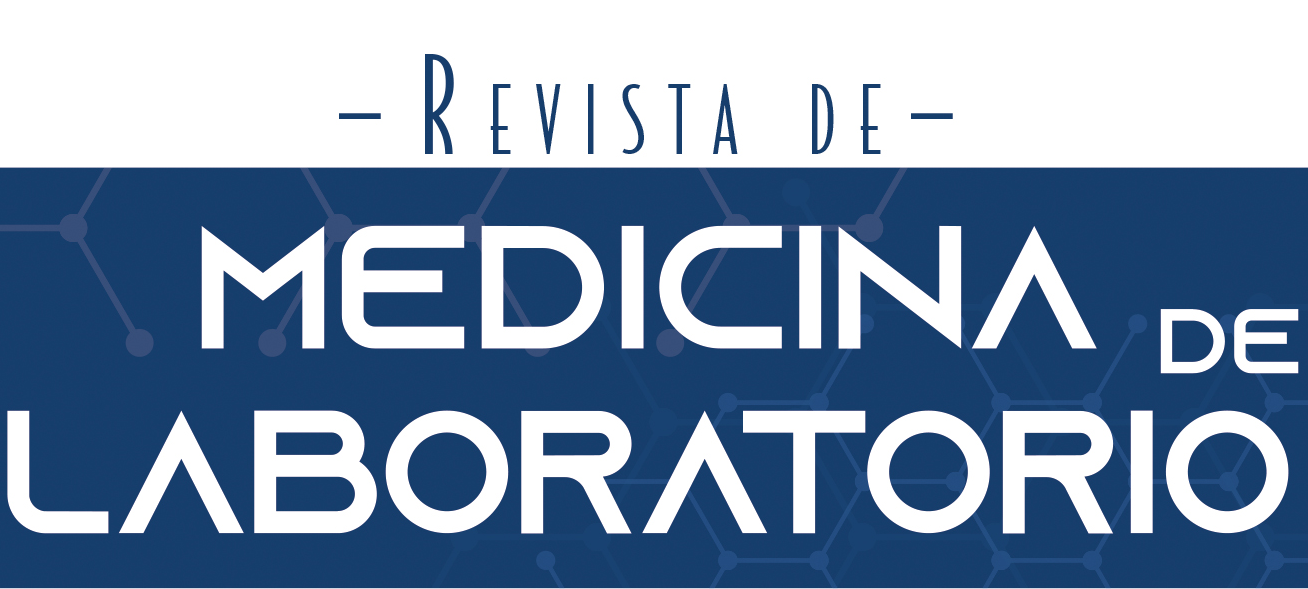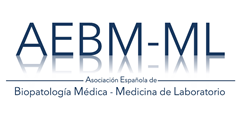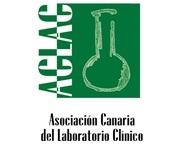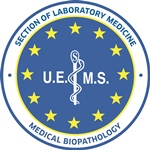Ford D, Easton DF, Stratton M, Narod S, Goldgar D, Devilee P, et al. Genetic heterogeneity and penetrance analysis of the BRCA1 and BRCA2 genes in breast cancer families. The Breast Cancer Linkage Consortium. Am J Hum Genet 1998;62(3):676-89.
DOI: 10.1086/301749
Antoniou AC, Pharoah PDP, McMullan G, Day NE, Stratton MR, Peto J, et al. A comprehensive model for familial breast cancer incorporating BRCA1, BRCA2 and other genes. Br J Cancer 2002;86(1):76-83.
DOI: 10.1038/sj.bjc.6600008
Antoniou A, Pharoah PDP, Narod S, Risch HA, Eyfjord JE, Hopper JL, et al. Average risks of breast and ovarian cancer associated with BRCA1 or BRCA2 mutations detected in case Series unselected for family history: a combined analysis of 22 studies. Am J Hum Genet. 2003 May;72(5):1117–30.
DOI: 10.1086/375033
Hoeijmakers JHJ. Genome maintenance mechanisms for preventing cancer. Nature. 2001 May 1;411(6835):366–74.
DOI: 10.1038/35077232
Walsh CS. Two decades beyond BRCA1/2: Homologous recombination, hereditary cancer risk and a target for ovarian cancer therapy. Gynecol Oncol. 2015 May;137(2):343–50.
DOI: 10.1016/j.ygyno.2015.02.017
Miller KA, Sawicka D, Barsky D, Albala JS. Domain mapping of the Rad51 paralog protein complexes. Nucleic Acids Res. 2004 Jan;32(1):169–78.
DOI: 10.1093/nar/gkg925
Badie S, Liao C, Thanasoula M, Barber P, Hill MA, Tarsounas M. RAD51C facilitates checkpoint signaling by promoting CHK2 phosphorylation. J Cell Biol. 2009 May 18;185(4):587–600.
DOI: 10.1083/jcb.200811079
Chun J, Buechelmaier ES, Powell SN. Rad51 paralog complexes BCDX2 and CX3 act at different stages in the BRCA1-BRCA2-dependent homologous recombination pathway. Mol Cell Biol. 2013 Jan;33(2):387–95.
DOI: 10.1128/MCB.00465-12
Bennett BT, Knight KL. Cellular localization of human Rad51C and regulation of ubiquitin-mediated proteolysis of Rad51. J Cell Biochem. 2005 Dec 15;96(6):1095–109.
DOI: 10.1002/jcb.20640
Liu Y, Tarsounas M, O’regan P, West SC. Role of RAD51C and XRCC3 in genetic recombination and DNA repair. J Biol Chem. 2007 Jan 19;282(3):1973–9.
DOI: 10.1074/jbc.M609066200
Vaz F, Hanenberg H, Schuster B, Barker K, Wiek C, Erven V, et al. Mutation of the RAD51C gene in a Fanconi anemia-like disorder. Nat Genet. 2010 May;42(5):406–9.
DOI: 10.1038/ng.570
Somyajit K, Subramanya S, Nagaraju G. RAD51C: a novel cancer susceptibility gene is linked to Fanconi anemia and breast cancer. Carcinogenesis. 2010 Dec;31(12):2031–8.
DOI: 10.1093/carcin/bgq210
Braybrooke JP, Li J-L, Wu L, Caple F, Benson FE, Hickson ID. Functional Interaction between the Bloom’s Syndrome Helicase and the RAD51 Paralog, RAD51L3 (RAD51D). J Biol Chem. 2003 Nov 28;278(48):48357–66.
DOI: 10.1074/jbc.M308838200
Tarsounas M, Muñoz P, Claas A, Smiraldo PG, Pittman DL, Blasco MA, et al. Telomere Maintenance Requires the RAD51D Recombination/Repair Protein. Cell. 2004 Apr 30;117(3):337–47.
DOI: 10.1016/S0092-8674(04)00337-X
Meindl A, Hellebrand H, Wiek C, Erven V, Wappenschmidt B, Niederacher D, et al. Germline mutations in breast and ovarian cancer pedigrees establish RAD51C as a human cancer susceptibility gene. Nat Genet. 2010 May;42(5):410–4.
DOI: 10.1038/ng.569
Pelttari LM, Heikkinen T, Thompson D, Kallioniemi A, Schleutker J, Holli K, et al. RAD51C is a susceptibility gene for ovarian cancer. Hum Mol Genet. 2011 Aug 15;20(16):3278–88.
DOI: 10.1093/hmg/ddr229
Thompson ER, Boyle SE, Johnson J, Ryland GL, Sawyer S, Choong DYH, et al. Analysis of RAD51C germline mutations in high-risk breast and ovarian cancer families and ovarian cancer patients. Hum Mutat. 2012 Jan;33(1):95–9.
DOI: 10.1002/humu.21625
Loveday C, Turnbull C, Ruark E, Xicola RMM, Ramsay E, Hughes D, et al. Germline RAD51C mutations confer susceptibility to ovarian cancer. Nat Genet. 2012 May;44(5):475–476; author reply 476.
DOI: 10.1038/ng.2224
Zheng Y, Zhang J, Hope K, Niu Q, Huo D, Olopade OI. Screening RAD51C nucleotide alterations in patients with a family history of breast and ovarian cancer. Breast Cancer Res Treat. 2010 Dec;124(3):857–61.
DOI: 10.1007/s10549-010-1095-5
Akbari MR, Tonin P, Foulkes WD, Ghadirian P, Tischkowitz M, Narod SA. RAD51C germline mutations in breast and ovarian cancer patients. Breast Cancer Res BCR. 2010 Aug;12(4):404.
DOI: 10.1186/bcr2619
Pang Z, Yao L, Zhang J, Ouyang T, Li J, Wang T, et al. RAD51C germline mutations in Chinese women with familial breast cancer. Breast Cancer Res Treat. 2011 Oct;129(3):1019–20.
DOI: 10.1007/s10549-011-1574-3
Clague J, Wilhoite G, Adamson A, Bailis A, Weitzel JN, Neuhausen SL. RAD51C germline mutations in breast and ovarian cancer cases from high-risk families. PloS One. 2011 Sep;6(9):e25632.
DOI: 10.1371/journal.pone.0025632
Lu W, Wang X, Lin H, Lindor NM, Couch FJ. Mutation screening of RAD51C in high-risk breast and ovarian cancer families. Fam Cancer. 2012 Sep;11(3):381–5.
DOI: 10.1007/s10689-012-9523-9
Romero A, Pérez-Segura P, Tosar A, García-Saenz JA, Díaz-Rubio E, Caldés T, et al. A HRM-based screening method detects RAD51C germ-line deleterious mutations in Spanish breast and ovarian cancer families. Breast Cancer Res Treat. 2011 Oct;129(3):939–46.
DOI: 10.1007/s10549-011-1543-x
Osorio A, Endt D, Fernández F, Eirich K, de la Hoya M, Schmutzler R, et al. Predominance of pathogenic missense variants in the RAD51C gene occurring in breast and ovarian cancer families. Hum Mol Genet. 2012 Jul 1;21(13):2889–98.
DOI: 10.1093/hmg/dds115
Blanco A, Gutiérrez-Enríquez S, Santamariña M, Montalban G, Bonache S, Balmaña J, et al. RAD51C germline mutations found in Spanish site-specific breast cancer and breast-ovarian cancer families. Breast Cancer Res Treat. 2014 Aug;147(1):133–43.
DOI: 10.1007/s10549-014-3078-4
Vuorela M, Pylkäs K, Hartikainen JM, Sundfeldt K, Lindblom A, von Wachenfeldt Wäppling A, et al. Further evidence for the contribution of the RAD51C gene in hereditary breast and ovarian cancer susceptibility. Breast Cancer Res Treat. 2011 Dec;130(3):1003–10.
DOI: 10.1007/s10549-011-1677-x
Coulet F, Fajac A, Colas C, Eyries M, Dion-Minière A, Rouzier R, et al. Germline RAD51C mutations in ovarian cancer susceptibility. Clin Genet. 2013 Apr;83(4):332–6.
DOI: 10.1111/j.1399-0004.2012.01917.x
Cunningham JM, Cicek MS, Larson NB, Davila J, Wang C, Larson MC, et al. Clinical characteristics of ovarian cancer classified by BRCA1, BRCA2, and RAD51C status. Sci Rep. 2014 Feb;4:4026.
DOI: 10.1038/srep04026
Loveday C, Turnbull C, Ruark E, Xicola RMM, Ramsay E, Hughes D, et al. Germline RAD51C mutations confer susceptibility to ovarian cancer. Nat Genet. 2012 May;44(5):475–476; author reply 476.
DOI: 10.1038/ng.2224
Sánchez-Bermúdez AI, Sarabia-Meseguer MD, García-Aliaga Á, Marín-Vera M, Macías-Cerrolaza JA, Henaréjos PS, et al. Mutational analysis of RAD51C and RAD51D genes in hereditary breast and ovarian cancer families from Murcia (southeastern Spain). Eur J Med Genet. 2018 Feb 2;
DOI: 10.1016/j.ejmg.2018.01.015
Pennington KP, Walsh T, Harrell MI, Lee MK, Pennil CC, Rendi MH, et al. Germline and somatic mutations in homologous recombination genes predict platinum response and survival in ovarian, fallopian tube, and peritoneal carcinomas. Clin Cancer Res Off J Am Assoc Cancer Res. 2014 Feb 1;20(3):764–75.
DOI: 10.1158/1078-0432.CCR-13-2287
Schnurbein G, Hauke J, Wappenschmidt B, Weber-Lassalle N, Engert S, Hellebrand H, et al. RAD51C deletion screening identifies a recurrent gross deletion in breast cancer and ovarian cancer families. Breast Cancer Res BCR. 2013 Dec;15(6):R120.
DOI: 10.1186/bcr3589
Jønson L, Ahlborn LB, Steffensen AY, Djursby M, Ejlertsen B, Timshel S, et al. Identification of six pathogenic RAD51C mutations via mutational screening of 1228 Danish individuals with increased risk of hereditary breast and/or ovarian cancer. Breast Cancer Res Treat. 2016 Jan;155(2):215–22.
DOI: 10.1007/s10549-015-3674-y
Osher DJ, De Leeneer K, Michils G, Hamel N, Tomiak E, Poppe B, et al. Mutation analysis of RAD51D in non-BRCA1/2 ovarian and breast cancer families. Br J Cancer. 2012 Apr;106(8):1460–3.
DOI: 10.1038/bjc.2012.87
Loveday C, Turnbull C, Ramsay E, Hughes D, Ruark E, Frankum JR, et al. Germline mutations in RAD51D confer susceptibility to ovarian cancer. Nat Genet. 2011 Sep;43(9):879–82.
Pelttari LM, Kiiski J, Nurminen R, Kallioniemi A, Schleutker J, Gylfe A, et al. A Finnish founder mutation in RAD51D: analysis in breast, ovarian, prostate, and colorectal cancer. J Med Genet. 2012 Jul;49(7):429–32.
DOI: 10.1136/jmedgenet-2012-100852
Gutiérrez-Enríquez S, Bonache S, Ruíz de Garibay G, Osorio A, Santamariña M, Ramón Y Cajal T, et al. About 1 % of the breast and ovarian Spanish families testing negative for BRCA1 and BRCA2 are carriers of RAD51D pathogenic variants. Int J Cancer J Int Cancer. 2013 Oct;
DOI: 10.1002/ijc.28540
Song H, Dicks E, Ramus SJ, Tyrer JP, Intermaggio MP, Hayward J, et al. Contribution of Germline Mutations in the RAD51B, RAD51C, and RAD51D Genes to Ovarian Cancer in the Population. J Clin Oncol Off J Am Soc Clin Oncol. 2015 Sep 10;33(26):2901–7.
DOI: 10.1200/JCO.2015.61.2408
Wickramanayake A, Wickramanyake A, Bernier G, Pennil C, Casadei S, Agnew KJ, et al. Loss of function germline mutations in RAD51D in women with ovarian carcinoma. Gynecol Oncol. 2012 Dec;127(3):552–5.
DOI: 10.1016/j.ygyno.2012.09.009
Thompson ER, Rowley SM, Sawyer S, kConfab, Eccles DM, Trainer AH, et al. Analysis of RAD51D in ovarian cancer patients and families with a history of ovarian or breast cancer. PloS One. 2013 Jan;8(1):e54772.
DOI: 10.1371/journal.pone.0054772
Golmard L, Castéra L, Krieger S, Moncoutier V, Abidallah K, Tenreiro H, et al. Contribution of germline deleterious variants in the RAD51 paralogs to breast and ovarian cancers. Eur J Hum Genet EJHG. 2017 Dec;25(12):1345–53.
DOI: 10.1038/s41431-017-0021-2
Bryant HE, Schultz N, Thomas HD, Parker KM, Flower D, Lopez E, et al. Specific killing of BRCA2-deficient tumours with inhibitors of poly(ADP-ribose) polymerase. Nature. 2005 Apr 14;434(7035):913–7.
DOI: 10.1038/nature03443
Byrski T, Huzarski T, Dent R, Gronwald J, Zuziak D, Cybulski C, et al. Response to neoadjuvant therapy with cisplatin in BRCA1-positive breast cancer patients. Breast Cancer Res Treat. 2009 May;115(2):359–63.
DOI: 10.1007/s10549-008-0128-9
Byrski T, Gronwald J, Huzarski T, Grzybowska E, Budryk M, Stawicka M, et al. Pathologic complete response rates in young women with BRCA1-positive breast cancers after neoadjuvant chemotherapy. J Clin Oncol Off J Am Soc Clin Oncol. 2010 Jan 20;28(3):375–9.
DOI: 10.1200/JCO.2008.20.7019
Lorusso D, Tripodi E, Maltese G, Lepori S, Sabatucci I, Bogani G, et al. Spotlight on olaparib in the treatment of BRCA-mutated ovarian cancer: design, development and place in therapy. Drug Des Devel Ther. 2018;12:1501–9.
DOI: 10.2147/DDDT.S124447
Taniguchi T, Tischkowitz M, Ameziane N, Hodgson SV, Mathew CG, Joenje H, et al. Disruption of the Fanconi anemia-BRCA pathway in cisplatin-sensitive ovarian tumors. Nat Med. 2003 May;9(5):568–74.
DOI: 10.1038/nm852
Murai J. Targeting DNA repair and replication stress in the treatment of ovarian cancer. Int J Clin Oncol. 2017 Aug;22(4):619–28.
DOI: 10.1007/s10147-017-1145-7
Tutt A, Robson M, Garber JE, Domchek SM, Audeh MW, Weitzel JN, et al. Oral poly(ADP-ribose) polymerase inhibitor olaparib in patients with BRCA1 or BRCA2 mutations and advanced breast cancer: a proof-of-concept trial. Lancet Lond Engl. 2010 Jul 24;376(9737):235–44.
DOI: 10.1016/S0140-6736(10)60892-6
Min A, Im S-A, Yoon Y-K, Song S-H, Nam H-J, Hur H-S, et al. RAD51C-deficient cancer cells are highly sensitive to the PARP inhibitor olaparib. Mol Cancer Ther. 2013 Jun;12(6):865–77.
DOI: 10.1158/1535-7163.MCT-12-0950
Kondrashova O, Nguyen M, Shield-Artin K, Tinker AV, Teng NNH, Harrell MI, et al. Secondary Somatic Mutations Restoring RAD51C and RAD51D Associated with Acquired Resistance to the PARP Inhibitor Rucaparib in High-Grade Ovarian Carcinoma. Cancer Discov. 2017;7(9):984–98.
DOI: 10.1158/2159-8290.CD-17-0419
Peng G. Exploiting the homologous recombination DNA repair network for targeted cancer therapy. World J Clin Oncol. 2011;2(2):73.
DOI: 10.5306/wjco.v2.i2.73
Ledermann J, Harter P, Gourley C, Friedlander M, Vergote I, Rustin G, et al. Olaparib maintenance therapy in patients with platinum-sensitive relapsed serous ovarian cancer: a preplanned retrospective analysis of outcomes by BRCA status in a randomised phase 2 trial. Lancet Oncol. 2014 Jul;15(8):852–61.
DOI: 10.1016/S1470-2045(14)70228-1
Suszynska M, Ratajska M, Kozlowski P. BRIP1, RAD51C, and RAD51D mutations are associated with high susceptibility to ovarian cancer: mutation prevalence and precise risk estimates based on a pooled analysis of ~30,000 cases. J Ovarian Res. 2020 May 2;13(1):50.
DOI: 10.1186/s13048-020-00654-3
Eoh KJ, Kim JE, Park HS, Lee S-T, Park JS, Han JW, et al. Detection of Germline Mutations in Patients with Epithelial Ovarian Cancer Using Multi-gene Panels: Beyond BRCA1/2. Cancer Res Treat Off J Korean Cancer Assoc. 2018 Jul;50(3):917–25.
DOI: 10.4143/crt.2017.220
Wong MW, Nordfors C, Mossman D, Pecenpetelovska G, Avery-Kiejda KA, Talseth-Palmer B, et al. BRIP1, PALB2, and RAD51C mutation analysis reveals their relative importance as genetic susceptibility factors for breast cancer. Breast Cancer Res Treat. 2011 Jun;127(3):853–9.
DOI: 10.1007/s10549-011-1443-0
De Leeneer K, Van Bockstal M, De Brouwer S, Swietek N, Schietecatte P, Sabbaghian N, et al. Evaluation of RAD51C as cancer susceptibility gene in a large breast-ovarian cancer patient population referred for genetic testing. Breast Cancer Res Treat. 2012 May;133(1):393–8.
DOI: 10.1007/s10549-012-1998-4
Kushnir A, Laitman Y, Shimon SP, Berger R, Friedman E. Germline mutations in RAD51C in Jewish high cancer risk families. Breast Cancer Res Treat. 2012 Dec;136(3):869–74.
DOI: 10.1007/s10549-012-2317-9
 Número de descargas:
21943
Número de descargas:
21943
 Número de visitas:
7317
Número de visitas:
7317
 Citas:
0
Citas:
0











